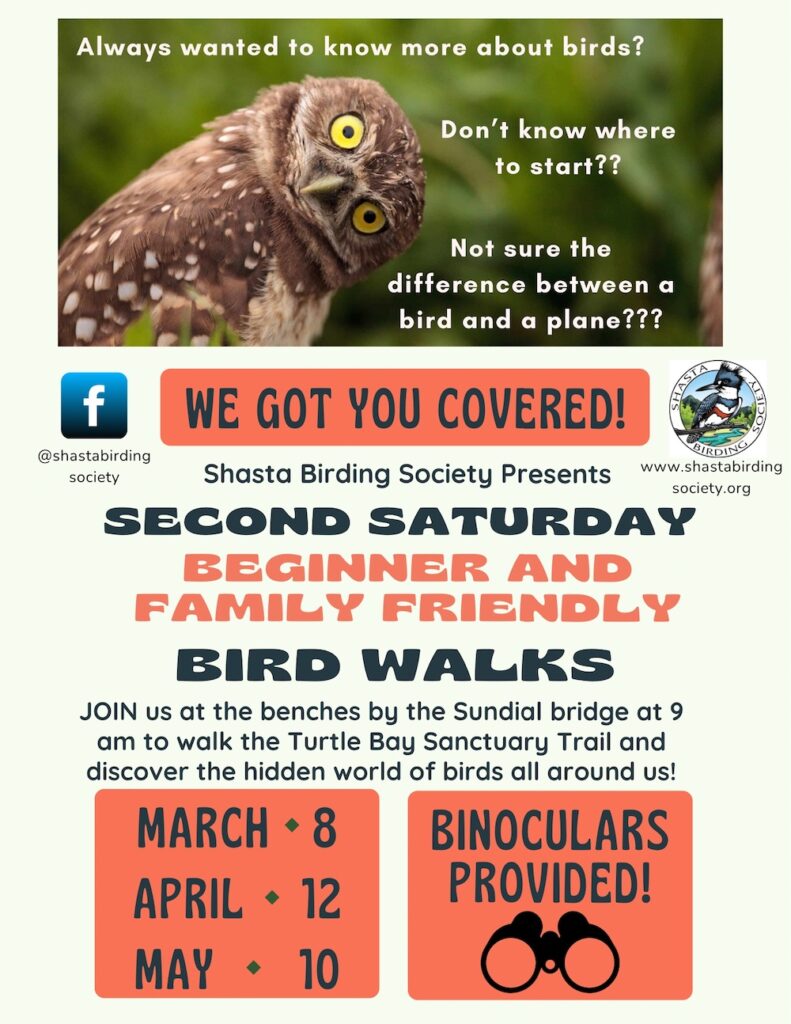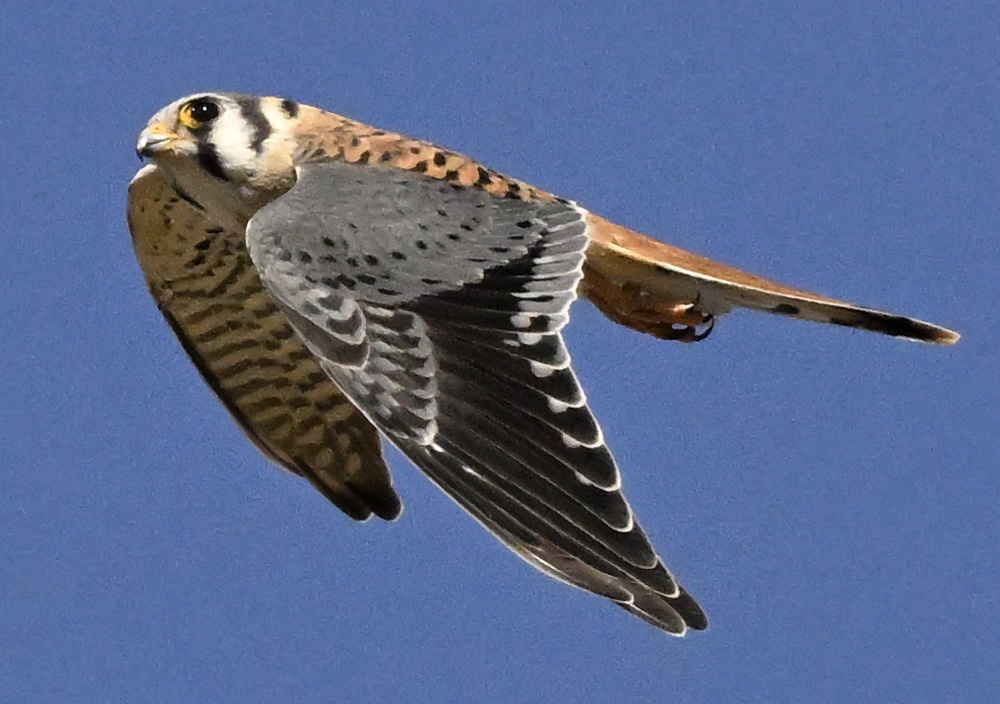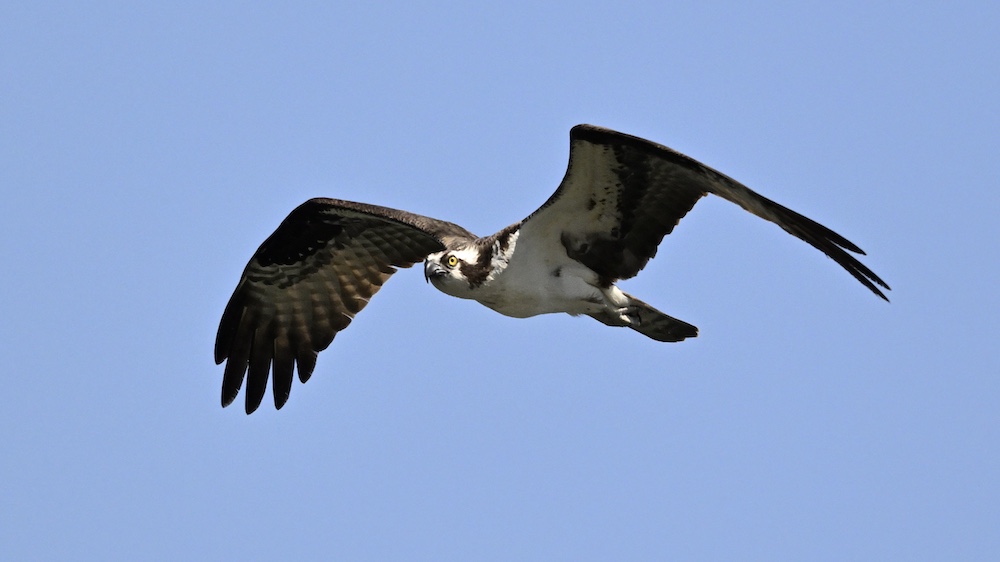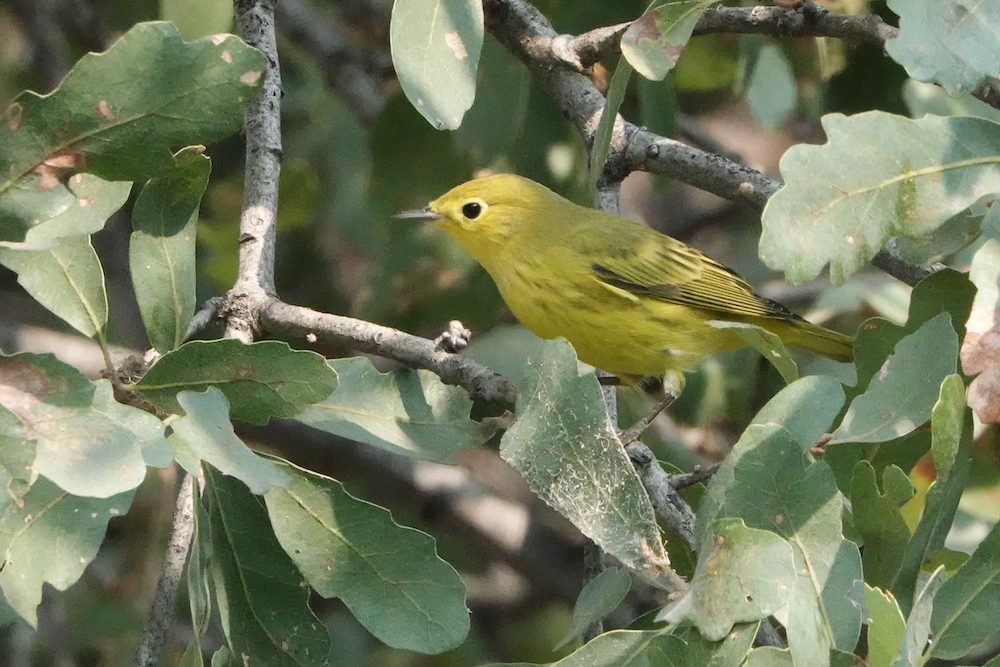
Always wanted to learn more about birds but not sure where to start? Join Shasta Birding Society for a family and beginner friendly bird walk at the benches by the Sundial bridge at 9 am to walk the Turtle Bay Sanctuary Trail and discover the hidden world of birds all around us! The trail is wheelchair accessible and benches are found throughout. The walk will last about 2 hours. Field guides and binoculars are provided. Join our program chair, Katherine Larson, and Stephanie Hughes, our education chair, as we take a leisurely one mile walk along the Turtle Bay Sanctuary Trail. This walk will begin at the south end of the Sundial Bridge and take us along the Sacramento River to view waterfowl and possibly gulls, egrets and herons. One of the best attributes of this trail is that we cannot only enjoy the excellent views along the river, on the other side of the trail we will be able to find several species of songbirds. Raptors are common in the area, including the Bald Eagle and Osprey. Park in the Turtle Bay Parking Lot. Rain cancels. Want more information? Contact Katherine at katherinelarson01@gmail.com




